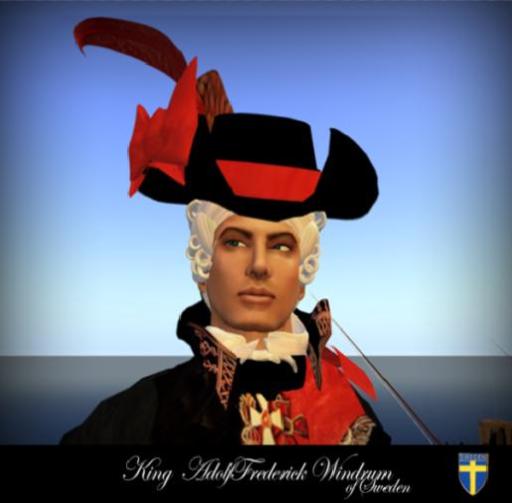Every reigning generation of the Bernadotte dynasty represented
Every reigning generation of the Bernadotte dynasty is represented in the choice of silver, porcelain and glass used for the table setting of the table of honour and the main table in the Hall of State. The table silver has been chosen so that the banquet begins and ends with the first and last generations, from King Karl XIV Johan and Queen Dsire to King Carl XVI Gustaf and Queen Silvia.
The Brazilian silver service
The table silver in other words, the decorative silverware comes from the Brazilian silver service, which belonged to Princess Amalie of Leuchtenberg. She was the sister of the future Swedish Queen Josefina, and the silver service was a gift from her.
The Geatish service
The table will also be adorned with four silver-mounted crystal vases from the Geatish silver service. This service was commissioned by Crown Prince Oscar (the future King Oscar I) from Adolf Zethelius and Johan Petter Grnvall. Zethelius made the pieces in 1827. Grnvall added to the service in the 1830s, and Gustaf Mllenborg made additional pieces in the 1840s.
The flower baskets used for the wedding table setting are from the pieces made by Zethelius in 1827. The architectural inspiration from the neo-Gothic style of the time is particularly clear. Certain parts are reminiscent of miniature Gothic pavilions.
Wedding gift
All the glassware was given to The King and Queen on the occasion of their wedding in 1976 by the Riksdag and the Government. In other words, this was the Swedish people's wedding gift to the couple. The Crown Princess Couple received a similar gift at their first pre-wedding reception: 1,000 Orrefors glasses designed by Erika Lagerbielke.
Silver plates
All guests' place settings will include silver chargers. The chargers used at the top table were commissioned by King Karl XIV Johan, while the others date back to the late 18th century and were probably commissioned by King Adolf Fredrik and Queen Lovisa Ulrika and by King Gustav III.
The first course
The porcelain is from the State service. The plates have gold-edged rims and are decorated with small national coats of arms. The first pieces from the service were commissioned in France in the 1850s. Additional pieces were then commissioned in Sweden on various occasions up until the 20th century. Both Rrstrand and Gustavsberg have been suppliers.
The cutlery was commissioned by Queen Dsire, the first Bernadotte queen. They feature the monogram EBD (Eugenia Bernhardina Desideria), and are gold-plated. They were made in Stockholm around 1830-40.
The fish course
The porcelain was made by Knigliche Porzellan-Manufaktur (KPM) in Berlin, probably in the 1760s. KPM was an important porcelain manufacturer, founded in 1761 at the initiative of Frederick the Great of Prussia, the brother of Queen Lovisa Ulrika, and is still in business today.
The plates have wavy rims decorated in gold, with a pattern of multicoloured flowers. The service was bought by King Oskar II in 1886, so the pieces were already antiques at the time.
The cutlery is the well-known Swedish design Olga. The forks are Swedish, and were made in the mid-1800s, while the knives in the same design were commissioned by King Gustaf VI Adolf in the 1950s.
The meat course
The porcelain is from a service commissioned by King Gustaf V in 1910. The plates are white with gilt lattice-work rims, with medallions featuring the monograms of King Gustaf V and Queen Victoria and the lesser national coat of arms.
The cutlery was commissioned by Queen Josefina, and the design is called Prince Albert.
Dessert
The guests at the table of honour and some of those seated at the long table will eat from plates from the great Svres service. This was a gift from Louis XVI of France to the future King Gustav III on his visit to Paris in 1771, when Gustav was still crown prince. Other guests at the top table will eat from copies of this service, commissioned by King Karl XV when he was crown prince.
King Fredrik Adolf, who came on the same visit, also received a Svres service. The manufacturer's archive documents list them as a single service, and the various pieces are recorded in great detail.
The Svres service
Svres is the most famous of all French porcelain manufacturers. The factory was founded in Vincennes in 1740, before moving to Svres in 1756. The company enjoyed the patronage of both King Louis XV and Madame de Pompadour from the very start, and in 1759 Svres became a royal supplier.
From this time onwards, Svres was a leading European porcelain manufacturer. Svres porcelain was often given as a gift by French royalty, and King Gustav III also received a Svres service on his visit to France in 1784.
Since the 1950s, this service has only been used on three occasions: when Queen Elizabeth II of the United Kingdom visited in 1956, for the French state visit of 2000, and for The King and Queen's wedding luncheon in 1976, when larger pieces from the service adorned the table. On that occasion, the plates were from a different service.
The cutlery was commissioned by King Karl XIV Johan. The original pieces were produced in France, with several subsequent commissions having been produced in Stockholm. The monogram, which is in relief, is cast into the cutlery. The design is unusually opulent, and the cutlery is gold plated.
The wedding cake
The plates used for serving the wedding cake in the Bernadotte Gallery are from a service commissioned by The King and Queen.
The coffee cups and tea cups were designed by Karin Bjrqvist, and were a gift to Queen Silvia on her 50th birthday from the Riksdag and the Government.


